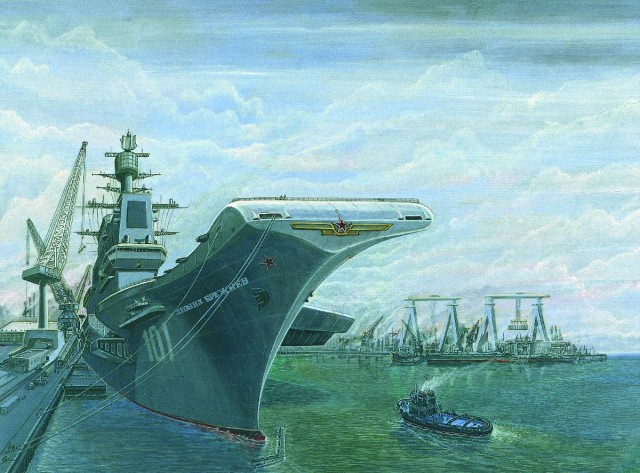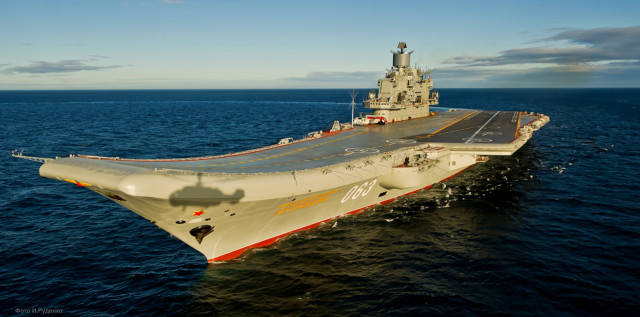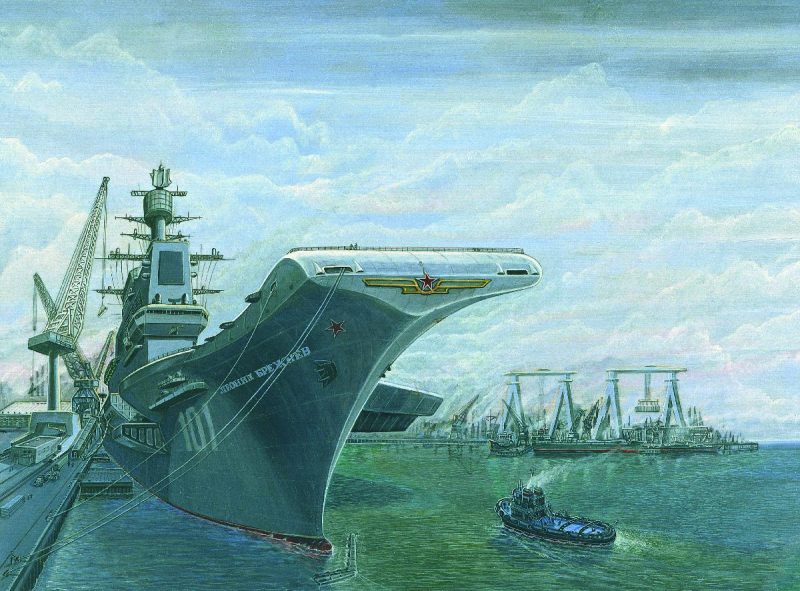At the peak of the US-Soviet conflict, during the 1980s, both sides were working on huge secret military projects. Both sides were afraid of the destructive power their opponents may possess. There was a lot of spying involved and many defense mechanisms and technologies were invented in order prevent a possible attack from the enemy. There is one government agency in the USA that was especially active during the Cold War; it is called the Defense Intelligence Agency.
The Defense Intelligence Agency (DIA) is an external intelligence service of the United States specializing in defense and military intelligence. A component of the Department of Defense (DoD) and the United States Intelligence Community (IC), DIA informs national civilian and defense policymakers about the military intentions and capabilities of foreign governments and non-state actors.
The DIA worked very hard to discover any new Soviet military technology that could possibly endanger the United States. All of their findings were reported to Washington. The Cold War and everything that surrounded it was considered as top secret, so they took every possible precaution to prevent information leaks. One part of their operations involved a group agency employed artists who were making very precise renderings of each soviet threat that was discovered. As everything else during this period, the renderings were used only for military briefings and they were closely kept inside the agency as highly classified material.
The “DIA Military Art Collection” was hidden from public eyes up until October 1996 when the DIA decided to release a set of lithographs featuring selections from the collection. The collection was declassified during the agency’s 35th-anniversary celebration. The whole DIA Art Collection, also known as “Soviet Military Power”, is comprised of more than 1000 paintings and drawings completed between 1965 and 1989 by Agency artists.
The purpose of these artworks was to illustrate publications and support official briefings. The teams of DIA analysts and artists worked very closely to achieve an accurate depiction of the military technology that was being illustrated. Most often these detailed artworks depicted classified photography or imagery that could not be used in its original form.
The illustrators that created these images were employed as visual information specialists and they worked in the Illustrations Department of DIA, located in the “B” Building of Arlington Hall Station, Virginia. In the early 1980’s, there were up to five DIA artists that worked on the sci-fi looking paintings.
All of the renderings have been inventoried, sorted, and stored as historical artifacts. The first set of twenty lithographs was printed in 1996 by the DIA History Office and Publications Division. The Agency is also planning to print a second set of lithographs and a book with the complete illustration collection. A selection of some of the original paintings can be seen at the 4th-floor museum area of the DIAC.
Here are some of the illustrations from the collection. Many of the weapon systems depicted were just scary futuristic projects back then, but it is a fact that many of those illustrations actually showed existing, real, technology.
Soviet Rail-Mobile SS-24 MOD 1 Intercontinental Ballistic Missile
The RT-23 was a Soviet ICBM developed and produced before 1991 by the Yuzhnoye Design Bureau In Dnipropetrovsk, Soviet Ukraine. It is cold-launched and comes in silo and railway car based variants. It is a three-stage missile that uses solid fuel and thrust vectoring for the first stage, with 10 MIRV warheads.
A typical missile launch train was composed of three M62-class locomotives (a standard diesel-electric locomotive of the period), followed by generating power car, command car, support car, and three missile launch vehicles, forming a nine-car set. The lead locomotive was driven by three officers, and the two immediately following engines were driven by two enlisted personnel each. The missile launcher has the shape of a refrigerator car, and the service cars are converted passenger carriages.

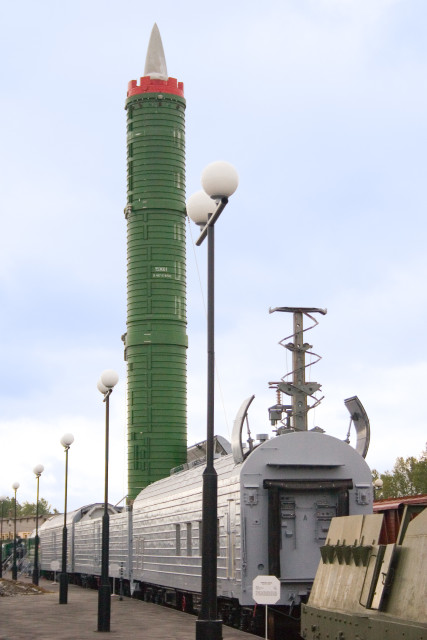
Soviet Wing-In-Ground Effect Aircraft
This is another existing technology. During the 1980s, the Soviets were testing various wing-in-ground effect vehicles for use in coastal defense and amphibious operations. The ORLAN-Class aircraft takes advantage of the increased aerodynamic lift that occurs when a wing operates near the surface. This greatly increases the craft’s ability to carry heavy loads over long distances, especially over water. This is a perfect aircraft for amphibious warfare.
The A-90 “Eaglet” (pictured below) uses ground effect to fly a few meters above the surface. The Russians classify it as Ekranoplan Class B – it can achieve an altitude of 3,000 m (9,800 ft), placing between Class A – which is limited to ground effect, and Class C, which exploits the ground effect only during take-offs and landings.
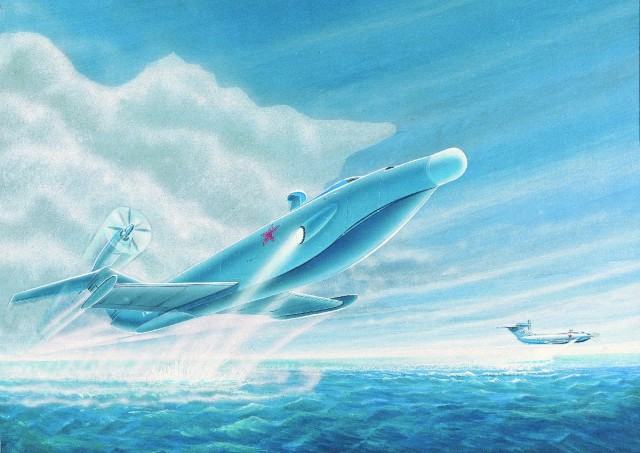
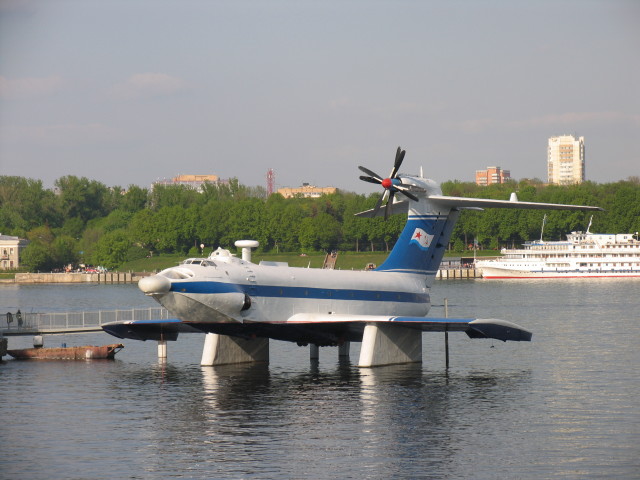
Soviet Ballistic Missile Submarine Base
In the 1980s, the USSR’s strategic nuclear forces were strengthened by new TYPHOON-class and DELTA IV-class strategic ballistic missile submarines. It was possible that these advanced submarines could be operated from underground coastal bases. They could be deployed from tunnels dug into the hillside.
One such facility really existed. The Balaklava Complex is an underground submarine base in Balaklava, Crimea, Russia/Ukraine (originally known as Object 825 GTS). It was a top-secret military facility during the Cold War, located in Balaklava bay.
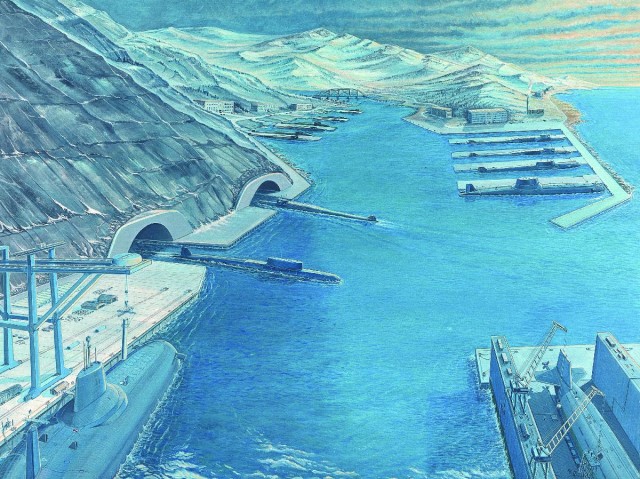
Soviet Ground-Based Laser
During the 1980s, The Soviet Strategic Defense Program was experimenting on a large scale with advanced laser technologies. The result of their research were ground-based lasers (as the one illustrated here) that could scramble US satellite signals. According to US intelligence, one such site, called “Terra 3” existed Kazakhstan. Only a few prototypes of this system were actually tested.
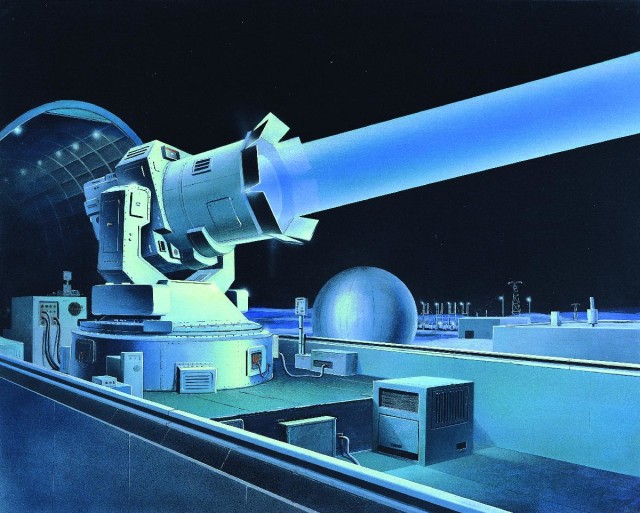
Soviet Space-Based Strategic Defenses
Although publicly opposing Reagan’s Strategic Defense Initiative (“Star Wars”), The USSR were actually working on their own space-based ballistic missile defenses. Their satellite network for strategic defenses was planned to be part of a unified land, air, and space-based shield that would stop any missile headed to Soviet territory.
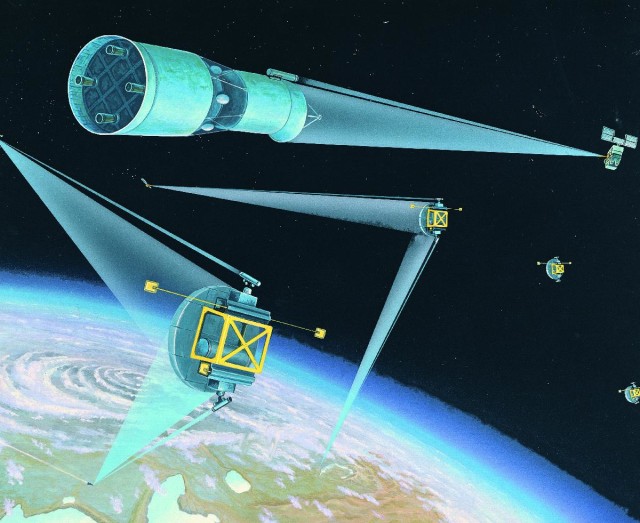
Soviet Tbilisi-Class Carrier at Nikolayev
TBILISI-class aircraft carriers were being fitted out in the late 1980s in Nikolayev Shipyard. This class of carriers was an important advance in Soviet naval capabilities. They succeeded the KIEV-Class carriers that were operating in the Soviet fleet at that time.
The ship shown below was launched as Leonid Brezhnev (as can be seen in the illustration), embarked on sea trials as Tbilisi, and finally named Kuznetsov. She is an aircraft cruiser (heavy aircraft-carrying missile cruiser in Russian classification) serving as the flagship of the Russian Navy.
She was originally commissioned in the Soviet Navy, and was intended to be the lead ship of her class, but the only other ship of her class, Varyag, was never completed or commissioned by the Soviet, Russian or Ukrainian navy. This second hull was eventually sold to the People’s Republic of China by Ukraine, completed in Dalian and launched as Liaoning.
